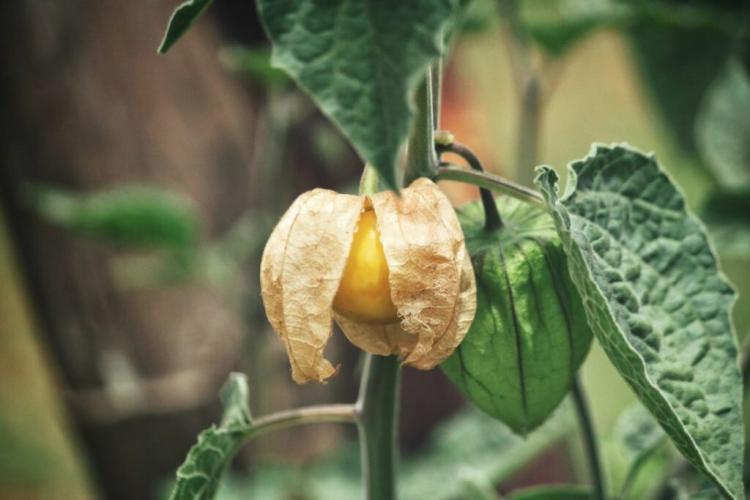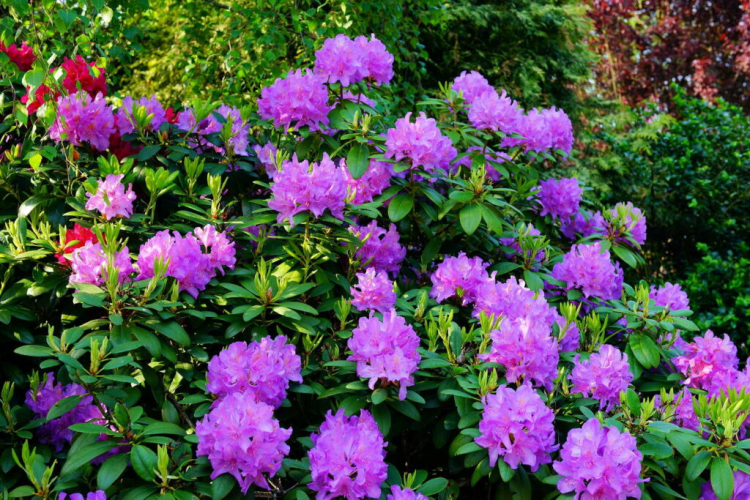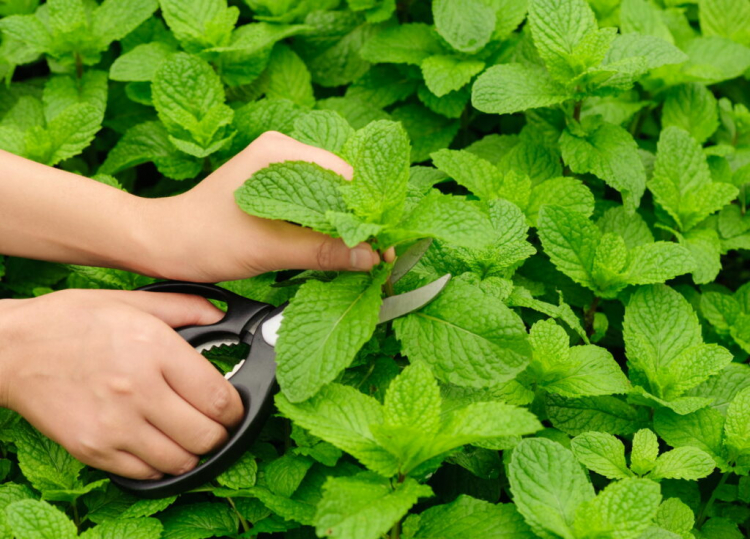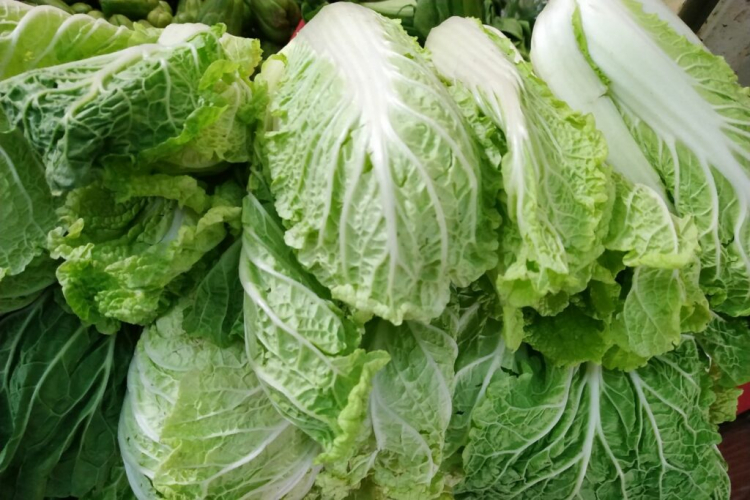Maintaining Physalis: Pruning, Fertilizing and Care
The popular orange fruit requires a little special care. You can find out everything you need to know about watering, fertilizing, and pruning physalis here.
The physalis ( Physalis peruviana ) – also called Cape gooseberry or Andean berry – is now also conquering the gardens in our latitudes. The nightshade family (Solanaceae), which comes from South America, not only enchants with its fluffy, soft leaves and delicate flowers.
Above all, the fruity, delicious taste of the fruit is what makes physalis so popular. Although the Andean berries are quite undemanding and easy to care for, there are still a few points to consider to obtain healthy plants and the richest possible harvest. What to consider when caring for the physalis plant, read this article.
Maintaining physalis: proper watering
Table of Contents
The Physalis can only withstand drought for a short time. Therefore, it should be watered regularly so as not to stress the plant too much. This may be necessary up to twice a day in midsummer, especially in sunny locations that are best suited for the plant. This is not the least since the Physalis loves sandy locations that can hardly hold water. It is best to water the Cape gooseberries vigorously in the morning before the midday heat and, if necessary, again in the late afternoon. With Physalis in a pot, it is worthwhile to use a saucer that catches excess water that is absorbed by the plant when necessary. However, if the water has been standing for several days without the physalis using it, you should pour it out to avoid root rot.

Cut physalis
With annual cultivation, the Cape gooseberries do not have to be cut, as the fruit and flower formation can otherwise suffer. However, pricking out excess side shoots may be necessary. You can find out more about skimming the physalis in the following paragraphs.
In multi-year cultivation, the physalis is cut back by about half before it is transferred to winter storage. This promotes branching and flower formation in the next spring and also makes wintering easier.
Tip: During the winter, instead of the whole Physalis plant, only cuttings can be cut and rooted. In this way, you not only multiply your physalis, but the young plants also bear much earlier than freshly sown plants in the next summer.

Fertilizing physalis: with what and how often?
The physalis is a medium eater when it comes to the supply of nutrients. But what is the right fertilizer for physalis? Mineral fertilizers with high, soluble nitrogen content, such as blue corn, are not suitable for growing physalis. These promote the growth of the shoots too much and only a few flowers are formed. When planting out, you can mix a dose of compost into the existing soil and put it in the planting hole.
A predominantly organic slow-release fertilizer is also incorporated into the surface of the soil or the potting substrate when the physalis is planted. The fertilizer is quickly converted by the soil organisms through regular watering. Two months later you can repeat the fertilization with a lower dose.
You might so like: Bottlebrush Plant: Everything For Planting And Caring For Callistemon
Similar to tomatoes, physalis also has a high need for potassium, which is optimally covered by our tomato fertilizer. The nutrients it contains are released evenly and slowly. This prevents over-fertilization and gently supplies the plant with essential nutrients. If the Physalis takes place in a pot for several years, you can mix the fresh substrate with the fertilizer granules when repotting the Physalis in a larger pot and thus ensure the supply of nutrients in the long term.
Tip: A mulch layer made of plant residues, such as lawn clippings or crushed nettles, has innumerable advantages for the Physalis: It prevents the growth of weeds, at the same time keeps moisture in the soil, and serves as the basis for new humus build-up. Please don’t forget to spread some nitrogenous fertilizer directly under the mulch layer. Otherwise, nitrogen will be temporarily fixed by the breakdown of the mulch material and will no longer be available to your Physalis.
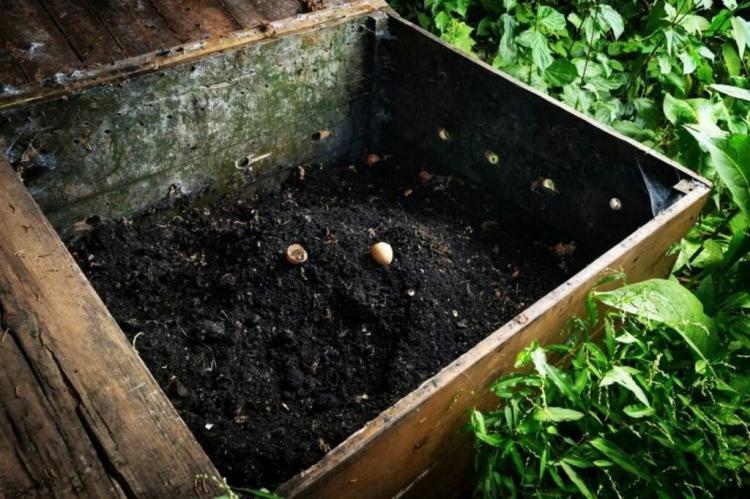
Maxing out physalis
When it comes to pruning the physalis plant, the gardeners have different opinions. Some let their plants grow wild, others skimp on the Cape gooseberry like a tomato ( Solanum Lycopersicum ). Depending on the vigor and density of growth, pricking out Andean berries may or may not be necessary. Because excess side shoots can reduce the air circulation between the many parts of the plant and get hardly any light for photosynthesis themselves.
In any case, always use a sharp knife or secateurs, which you disinfect before and after pruning a plant. In this way, no pathogens such as gray mold ( Botrytis cinerea ) are transmitted from one plant to the next. If the lowest side shoots are on the ground, you should cut them off completely because of the risk of rot. If your physalis grows heavily and forms fruits, to which, however, hardly any sunlight and air can penetrate, it is advisable to skin the plant.
You might so like: 10 Tips For Growing Rhubarb
If the bushes grow too densely, the risk of fungal infestation after rain and high humidity is increased due to the slower drying process. You should therefore remove the shoots that are growing inwards: this way, the inside of the plant also reaches light and air again. The fruits are then often even bigger and tastier.
However, you should not overdo it when thinning out, otherwise, the plant will be stimulated to strong growth and first fresh shoots and no more new flowers and fruits will form. After a few weeks, the gentle pruning can be repeated to remove newly formed shoots.
Summary Physalis maxed out:
- Disinfect the cutting tools, such as knives and secateurs, before and after each plant.
- Completely remove any shoots lying on the ground.
- Remove inward side shoots if they are too dense.
- Use it sparingly and several times at intervals of a few weeks.
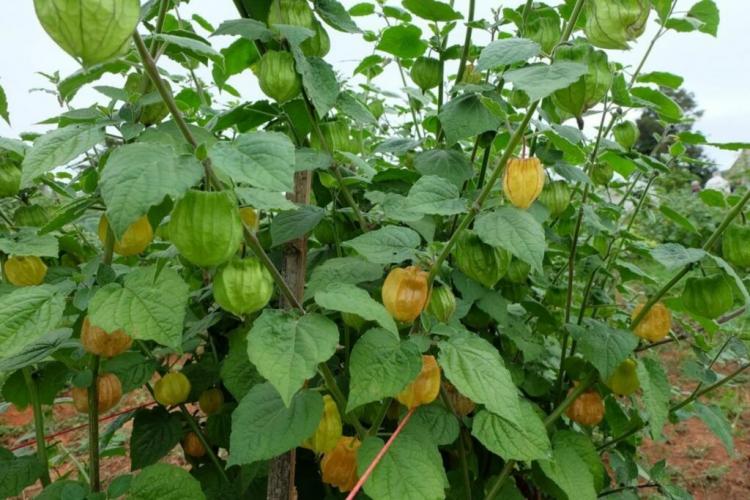
Physalis has yellow leaves: what to do?
If the Physalis gets yellow leaves, it may be due to an insufficient supply of nitrogen. In this case, the older, lower leaves turn increasingly yellow and fall off. Here we recommend quick fertilization with organic liquid fertilizer. This is applied together with the irrigation water and thus reaches the roots of the physalis.
You might so like: Fertilizing Grapevines: Instructions & Expert Tips
A yellow coloration can also occur due to too much moisture or even waterlogging, mostly in pot cultures. It is best to ensure that the planting runs smoothly and empty the saucers if the water has been in them for more than a day. By the way, in autumn the leaves fall off naturally and turn yellow to brown in the process. Now the wintering of the Physalis should be considered.
Support the physalis with a climbing aid
In the case of tall Physalis varieties, the plants should be supported with one or more rods or a metal ring. They should also be tied up in wind-exposed locations outdoors. Bushy Andean berries usually do not need any support in sheltered places.
Diseases and pests in Physalis
If the Physalis is cultivated under optimal conditions, i.e. in a sunny, airy location with permeable soil and a good supply of nutrients, it is only slightly susceptible to diseases and pests. In spring and during the frost-free wintering, aphids multiply quickly, but only need to be combated if the infestation is severe. In unfavorable weather, for example, a lot of moisture and high temperatures at the same time, an infestation with gray mold and powdery mildew can occur. Infested parts of the plant should be removed and disposed of with household waste, not on the compost.
Maintain physalis in a pot
The physalis in the pot or balcony box requires the same care as the physalis in the bed. The decisive steps in potting are choosing the right plant substrate and the right planter. You can find out what needs to be considered in our article on Physalis plants.
Caring for physalis: everything at a glance
Here we have again summarized the most important points for caring for the Andean berries:
- Water physalis regularly, at best water vigorously in the morning.
- When planting out and repotting, add mainly organic slow-release fertilizer, add more after about two months.
- Careful but regular pruning increases the fruit size and prevents the fungal attack.
- Support and tie up tall varieties.
- Cut the shoots of the Physalis back to about half in October before overwintering and repot the plant in spring. Propagation by cuttings is also possible.
By the way: If you want to cultivate the plant for several years, i.e. overwinter the physalis, it must be cut back in October and placed at 10 ° C. In the spring it is then transferred to a larger pot with fresh soil and nutrients. You can read more about this in our special article.
